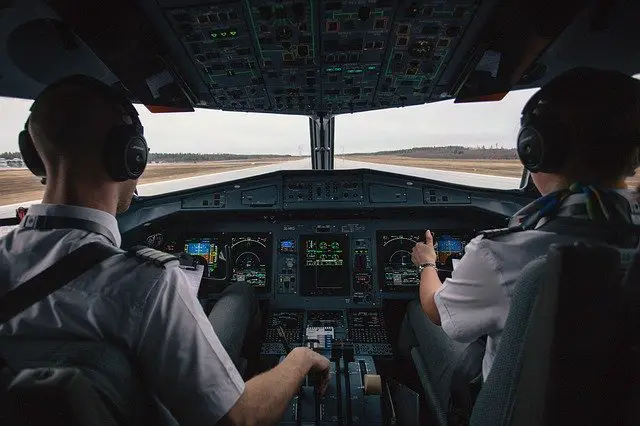OOOI is an automated message recorded by aircraft systems that log the following times: pushback, take-off, landing and arrival at the gate.
Table of Contents
What does OOOI stand for?
OOOI stands for Out, Off, On and In.
- Out – The out of gate (or “off blocks”) time when the aircraft leaves the gate. This is usually logged when the sensors record the last door closed (either cabin door or cargo hold) and parking brake released.
- Off – The time of take-off. This time is triggered by “weight off wheels” sensors that are triggered when the aircraft leaves the runway.
- On – The on time is the landing time, and is recorded by “weight on wheels” when the aircraft touches down.
- In – The in time is the time of arrival at the gate. The in time is triggered when the parking brake is set and the engines are shut down.
How does OOOI work?
The various aircraft sensors trigger the relevant times which are logged on the onboard computer system.
The times are recorded in UTC or “Zulu Time” and transmitted via ACARS to the airline operations department.
OOOI times can be accessed by the pilots onboard through ATSU (Air Traffic Services Unit) section of the FMS/MCDU (useful for filling in their logbooks!).
Learn about how ACARS works, and what it’s used for, here.
What is OOOI used for?
The logging of accurate times for each flight phase in aviation is critical.
Engineering departments need to know the aircraft flight hours and “cycles” (take-offs and landings) in order to plan relevant maintenance inspections.
Operations department need to update the various stakeholders (airports, passengers, service providers etc.) about aircraft movements.
Crewing departments need logs of the crew’s flight times to avoid exceeding any limits.
Frequently Asked Questions About OOOI Times
What does OOOI stand for?
OOOI stands for out, off, on and in, and refers to aircraft movement times.
What in an ATSU in aviation?
ATSU (Air Traffic Services Unit) is a unit onboard aircraft that manages the data link communications between aircraft and Air Traffic Service (ATS) centres.
What are aircraft cycles?
A “cycle” refers to one takeoff and one landing of an aircraft.
What is Zulu time in aviation?
Zulu time in aviation is shorthand for UTC time and is expressed in the 24-hour format followed by a ‘z’, for example 2100z is 9pm UTC.
What is the difference between UTC and GMT?
The difference between UTC (Universal Coordinated Time) and GMT (Greenwich Mean Time) is that GMT is a time zone whereas UTC is a time standard. GMT is a time zone used in some countries but UTC is a time standard that is the reference for time zones worldwide.
If you found this article interesting please take 5 seconds to share this on your favorite social media. Thanks so much, I really appreciate it! [email protected]

Pete has been flying aircraft for the last 20 years. He has flown everything from light piston aircraft up to heavy jets as both First Officer and Captain. He’s currently enjoying life flying the Airbus A330 for a major international airline.






